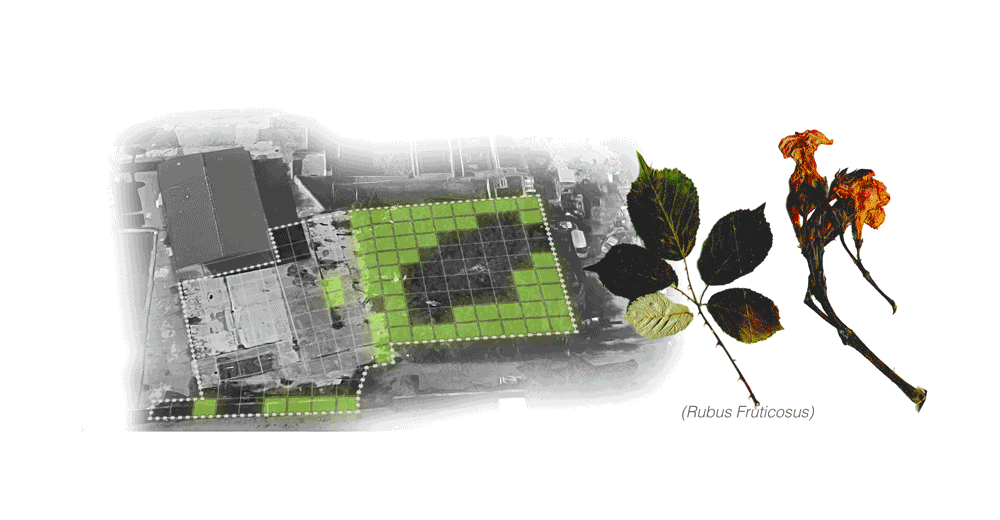


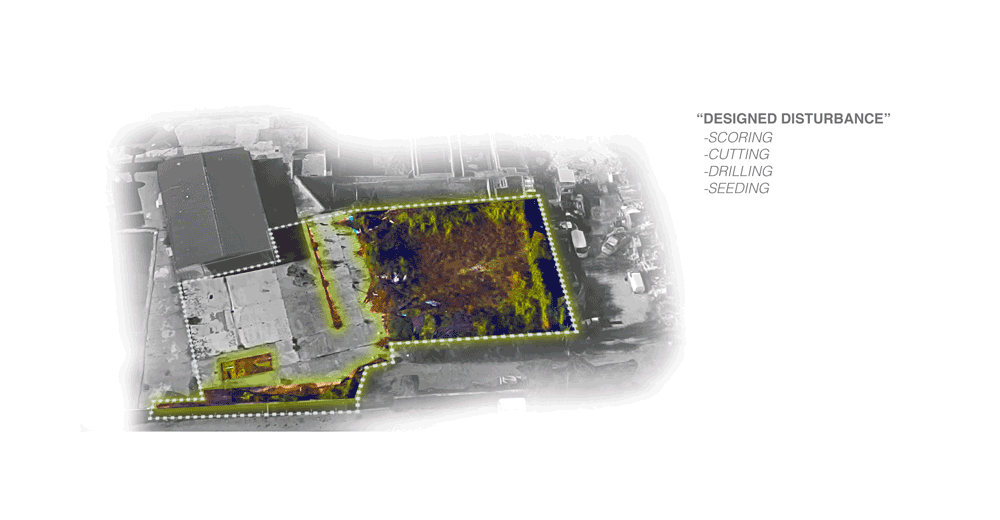
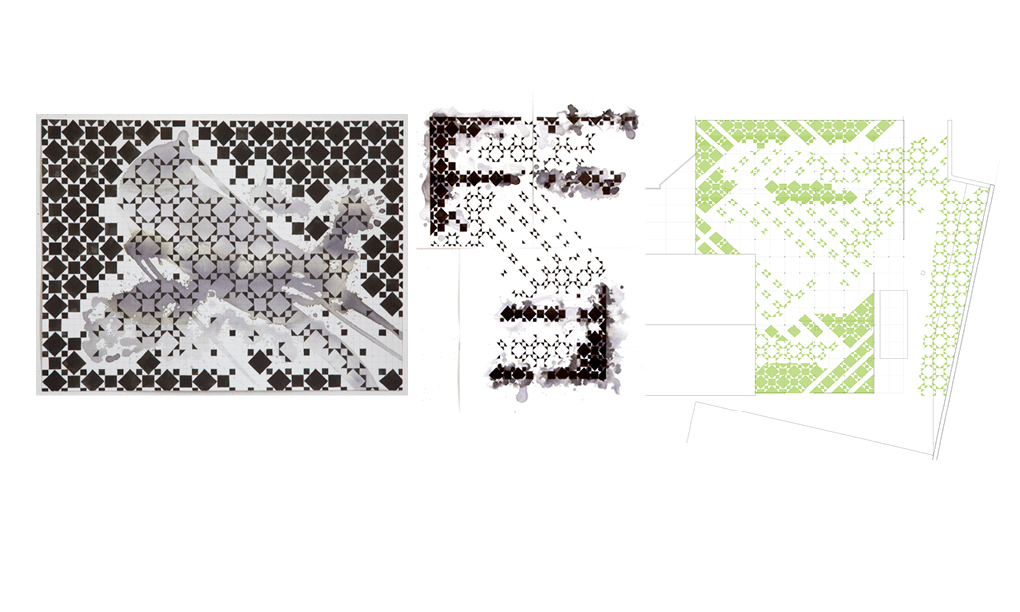
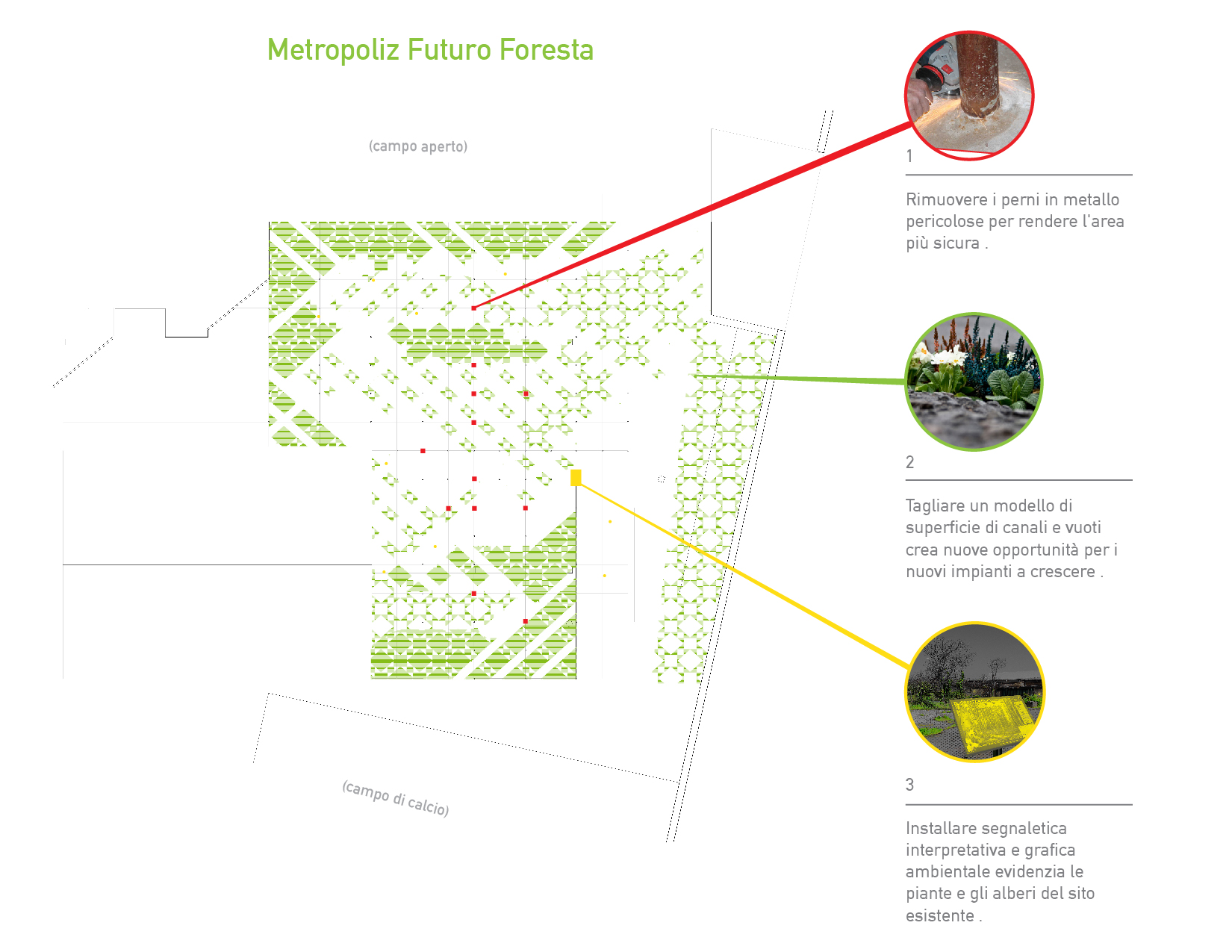

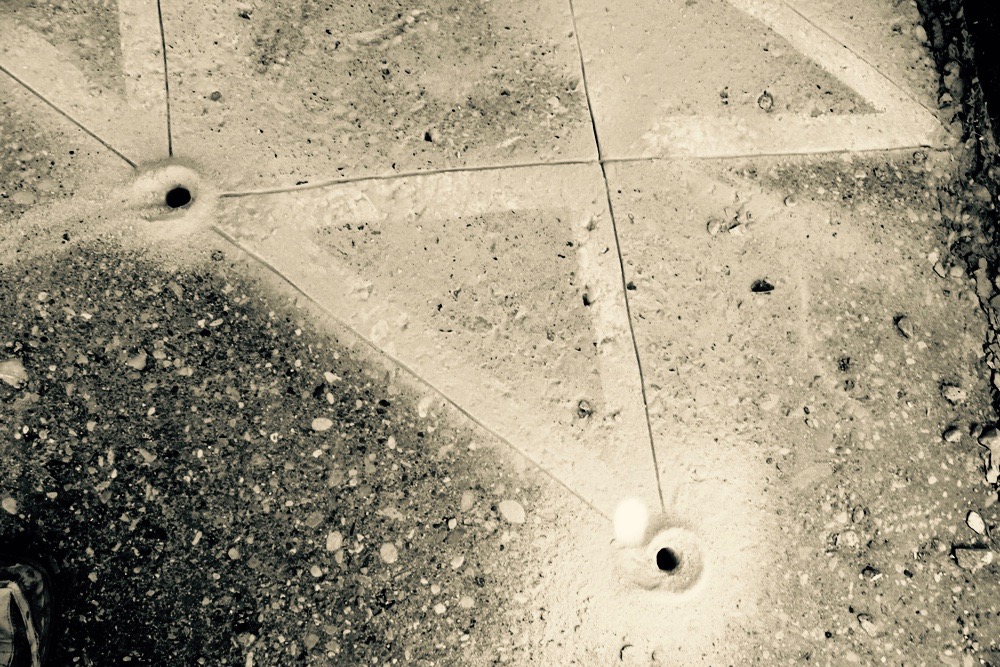
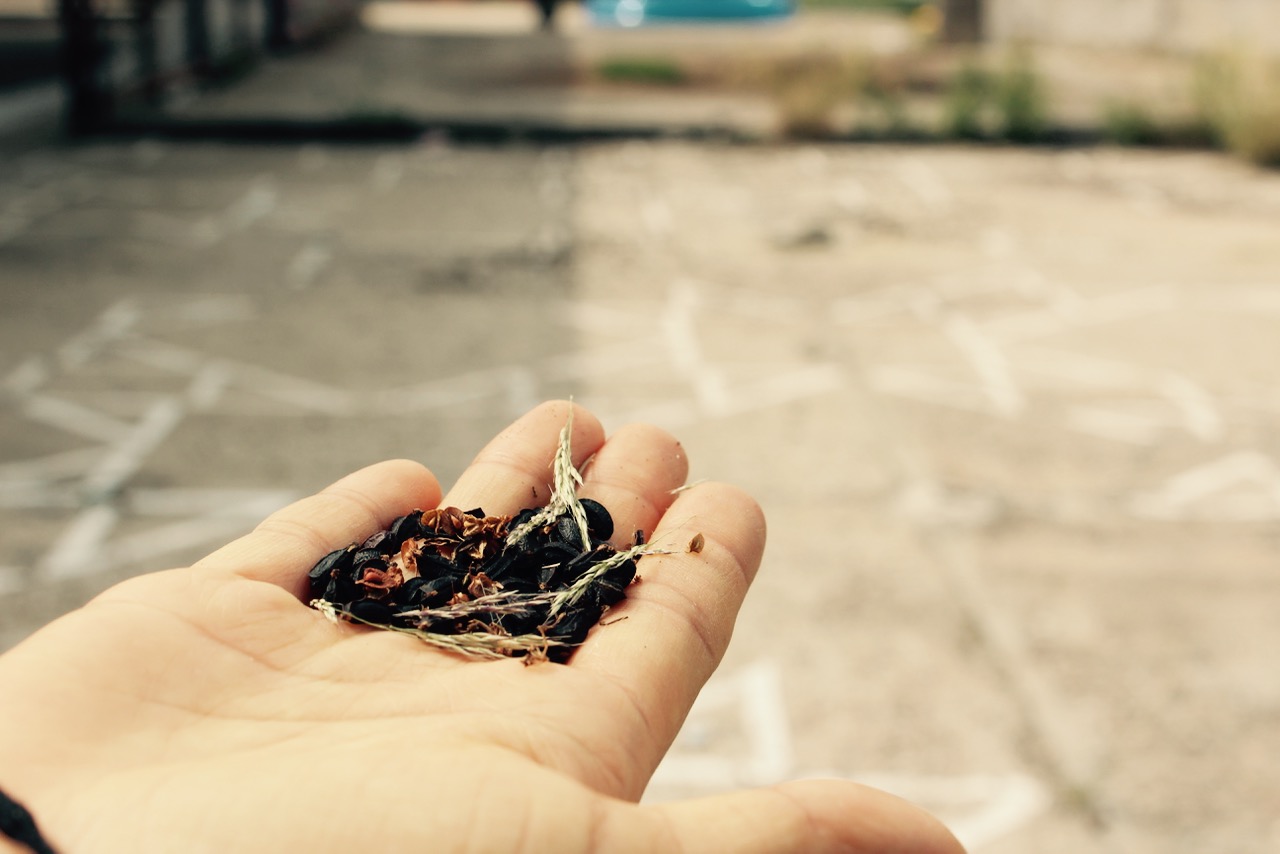


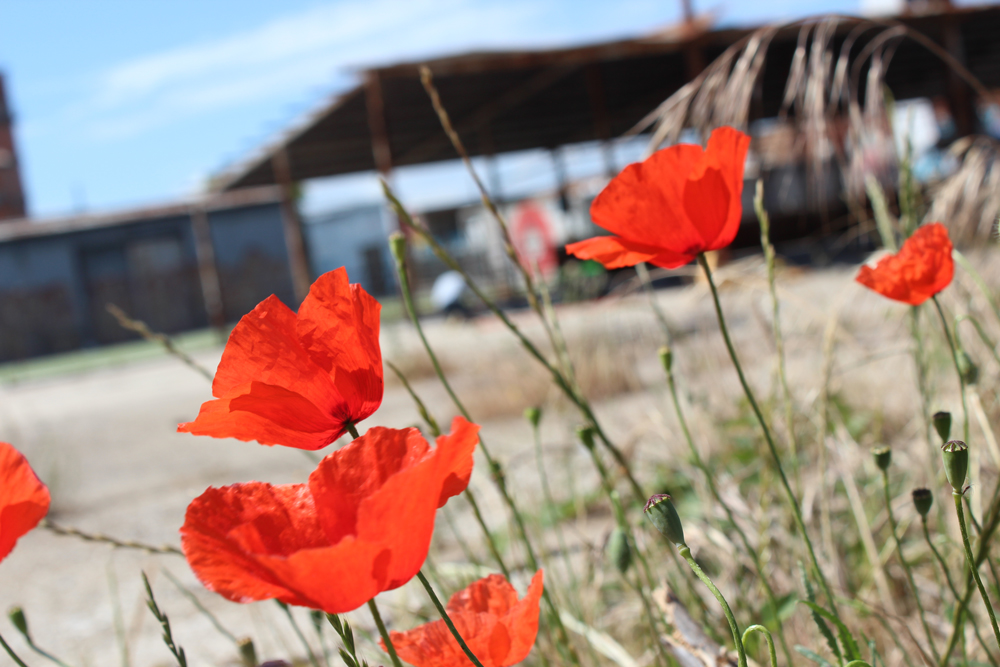
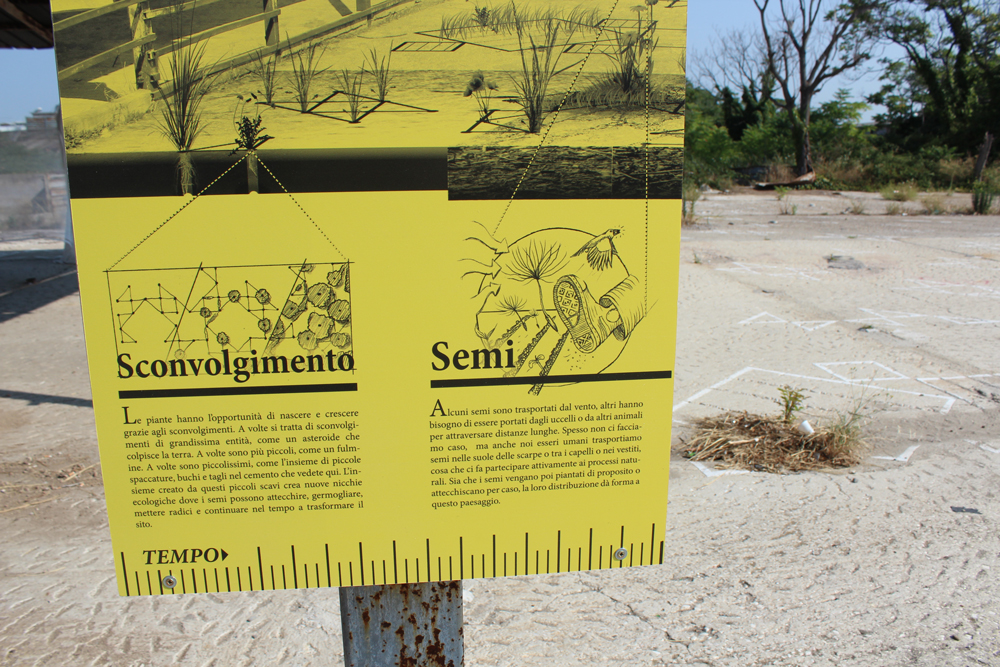
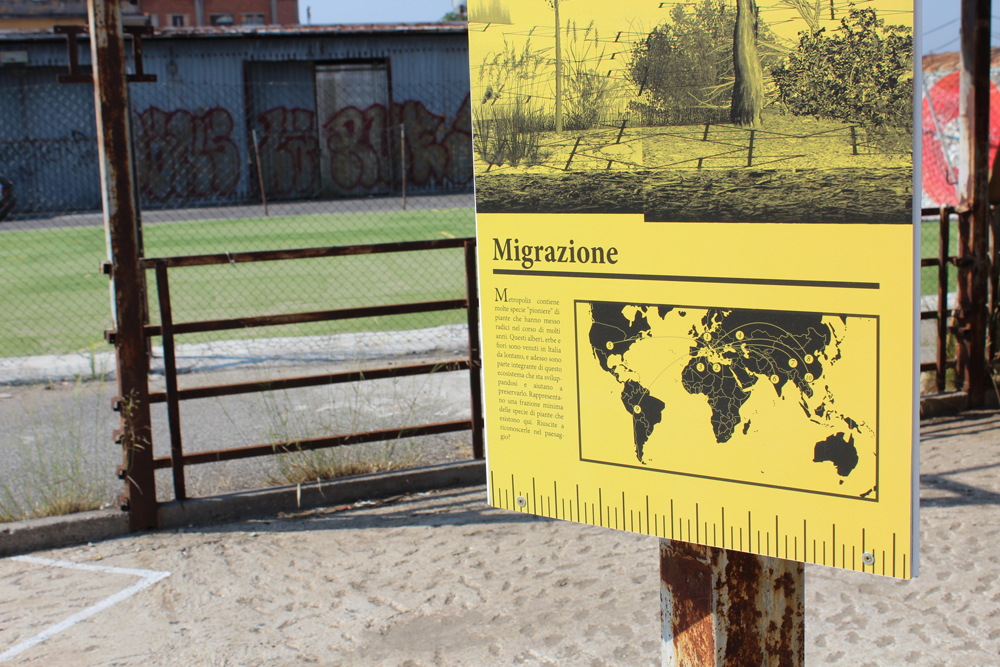
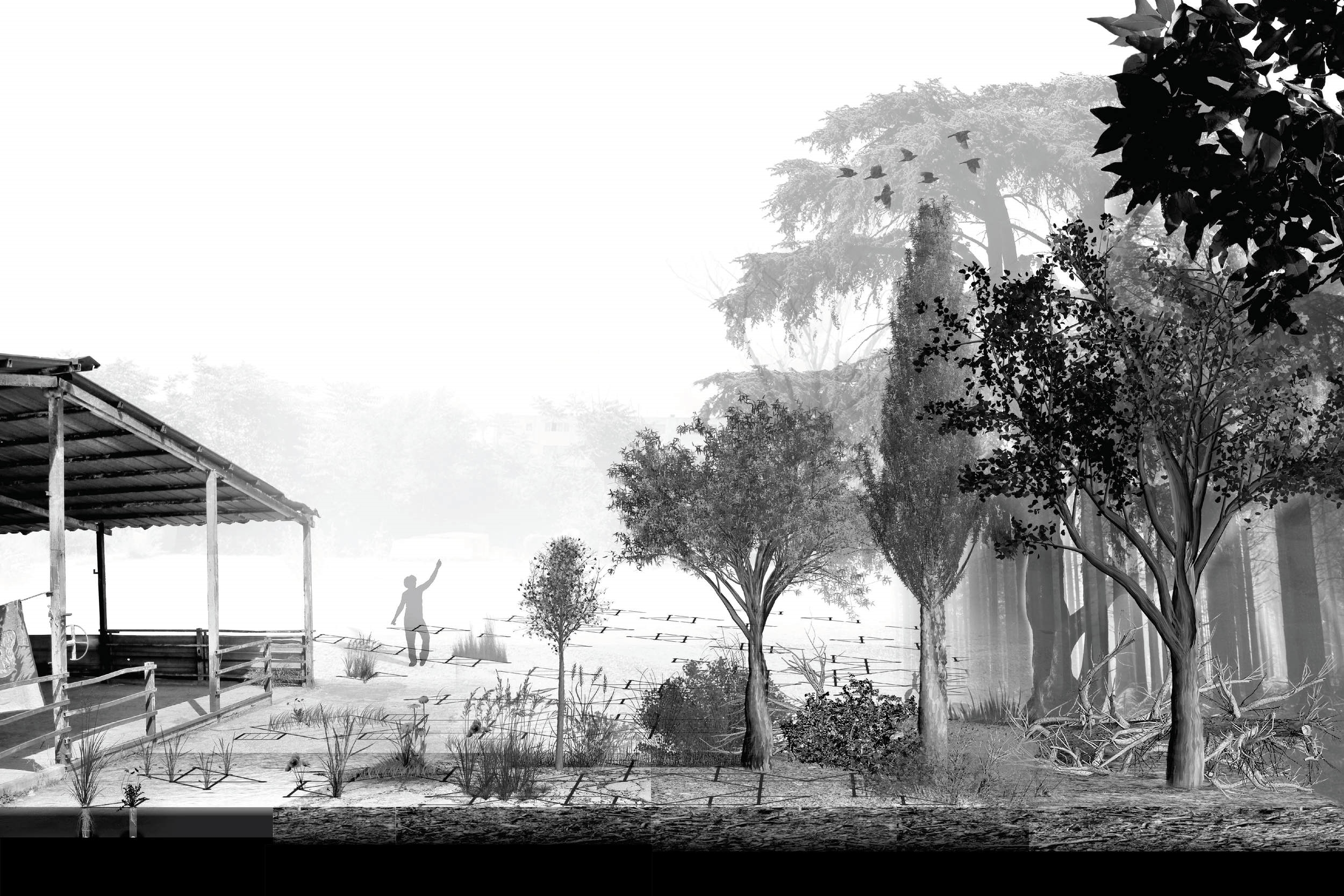
Like many other abandoned post-industrial urban sites, Metropoliz exists in a simultaneous state of ruination and rebirth. Known locally as “The Museum of the Other and the Elsewhere” (MAAM), this site in the outskirts of Rome is home to a growing number of informal human and plant-based occupations and ecologies. The Metropoliz Future Forest is our ongoing experiment exploring and accelerating the role of novel ecosystems to slowly transform this former salami factory into a new type of landscape.
What we Asked:
Rather than impose or erase the existing ecologies of the site that are already thriving, what would it mean to understand, celebrate, and accelerate them by staging a tactical landscape intervention?
What we Discovered:
After a field survey we identified at least 34 species of shrubs and grasses, 4 species of trees (along with many other species of pollinating insects, birds, and reptiles). Like any other form of “weeds” these vegetal interlopers weren’t intentionally cultivated by anyone, but rather have arisen spontaneously in the decades after the closing of the factory, in response to the localized disturbances and opportunities.
What we Did:
By employing a subtractive formal vocabulary of cracks, channels, and perforations, the intervention was based on strategically excavating a series of designed disturbances in the already deteriorating concrete slabs of the site. By providing conditions for attracting and germinating even more opportunistic wind-borne seeds, these new ecological niches are intended to support, extend and connect the disparate vegetal ecologies of the site over time.
Rather than a completed project, we think of the Metropoliz Future Forest as an actively unfolding and open-ended case study that will be periodically assessed as it continues to change over time. Specific metrics we intend to track include comparative and temporal assessments of biodiversity, percentage and morphology of vegetated territory, hydrology, soil health, and other vital ecosystem service values.
We envision this project as both a practical and symbolic contribution to a growing discourse on how post-industrial sites like Metropoliz might be viewed as assets rather than liabilities in the fight for greater urban ecosystem health and resiliency.
What Else:
This project was conceived and implimented in collaboration with Firat Erdim and Olivia Valentine, with local support from the American Academy in Rome.
Many thanks to Roger Camero, Mac Casey, Adam Kuby, Paula Matthusen, Dave McKenzie, María Robles, and Stefania Tutino. As well as Lukasz Kowalczyk, Leslie Johnson and students from the College of Architecture at the Illinois Institute of Technology for volunteering their time so generously.



